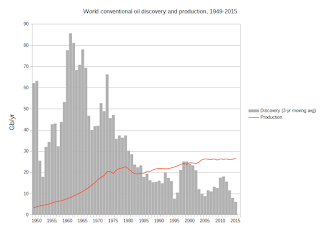From "Minerals Education Coalition"
So, here is a "fact sheet" titled "Metals & Mineral Products used to make a Solar Panel." If you know something about how solar panels are made, you can have a good laugh at reading this list. Without going into the details, let me just mention that they manage to list at least one element (lead) which is NOT used in any kind of solar panels, while they completely miss the only rare metal that IS actually used in standard silicon solar cells: silver. And, if you know something about sputtering and thin films, read their "interesting facts" about molybdenum at page 2. That will give you a good feeling of what the acronym ROFLMAO means.
Apart from the plain mistakes, the trouble with this list is that it gives the impression that "a solar panel" would have to contain ALL these minerals, whereas most of them are used only for special application and the. All this makes the depletion of rare metals look like a fundamental problem for solar energy; there has to be a reason why I am continuously confronting people telling me that solar panels use rare earths or some other rare and exhaustible mineral. This is exactly the kind of confusion that obscures the fact that, in order to make a solar panel, all you need is aluminum and silicon, a little silver (not strictly necessary) and traces of boron and phosphorous.
So, what do we have here? It is just a show of incompetence or something worse, a specific attempt at disinformation? What we can say that it comes from a purportedly "educational" organization that lists its purposes as:
The Minerals Education Coalition’s (MEC) mission is to identify, produce and disseminate fact-based K-12 minerals education lessons and activities and to inform and educate the general public about the importance of mining in their everyday lives.This "Mineral Education Coalition" is a spinoff of the SME Foundation, the Society for Mining, Metallurgy & Exploration. They seem to be mainly a corporate lobbying group and surely they are perfectly honest in listing their sponsor on their site
Pinnacle Partner:
Freeport-McMoRan, Inc.
Champion Partners:
Caterpillar, Inc.
Newmont Mining Corp.
Benefactor Partners:
RioTinto
Alliance Resource Partners, L.P.
JoyGlobal, Inc.
Royal Gold
Patron Partners:
Bechtel
Cloud Peak Energy
Kinross Gold USA
MMSA
Vulcan Materials Company Foundation
These are all mining companies, including coal mining ones. This being the case, it is not surprising that their site shows a clear anti-renewable, anti-climate science streak, as you see. Just a couple of examples, for instance at this link for the anti-renewable bias, and at this link for the anti-climate science attitude. And, certainly, their president has ideas about coal that don't seem to agree with the need of reducing emissions (boldface mine)
Another challenge facing coal, and other mining sectors as well, are government efforts in the United States and other countries to combat climate change. We have already seen significant impacts on mining. In the November 2014 issue of Mining Engineering, John Marsden’s column on climate change stirred up some debate. We all know that climate change has natural causes, but human activities can contribute to the change. This issue is a major challenge to not only the mining industry, but to the public that we serve because now it is primarily a political issue. Regardless of one’s position on the issue of climate change, its causes or its consequences, the reality is the movement to reduce emissions linked to climate change is growing in the United States and in other countries. I agree with John’s analysis and reiterate that regardless of the accuracy of climate change predictions, SME needs to be part of the conversation so that, we can continue to use our coal resources in a carbon-constrained world.
Of course, SME and its members have the right to think to publicly express whatever they like about climate science. But do we really want the mining lobby to create a spinoff dedicated to "educate children?"


















